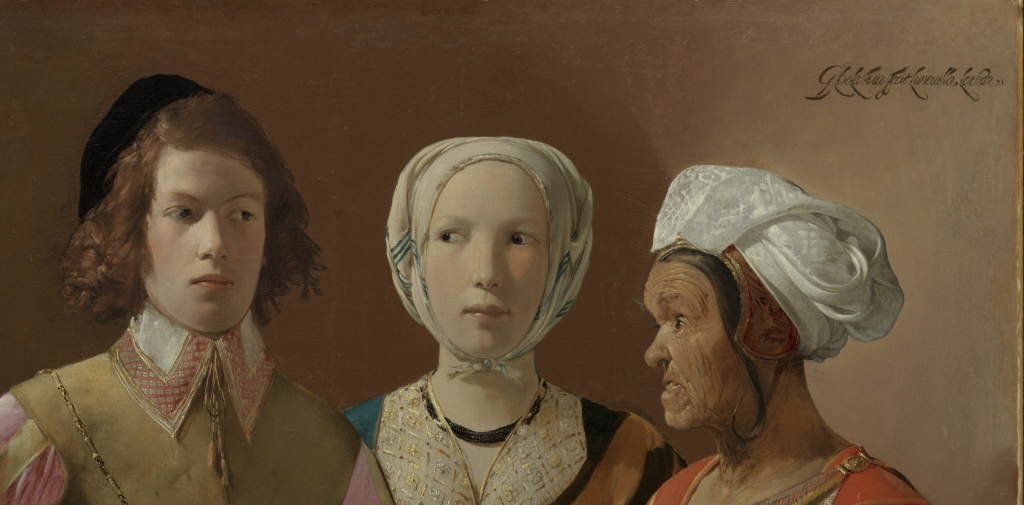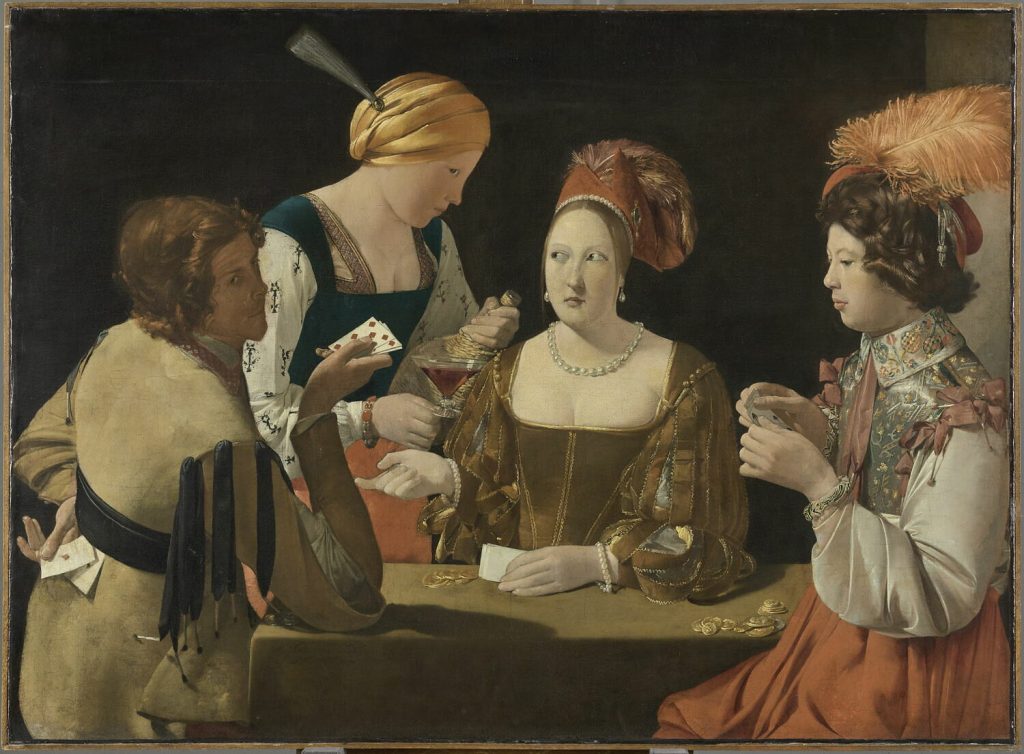Masterpiece Story: L.O.V.E. by Maurizio Cattelan
In the heart of Milan, steps away from the iconic Duomo, Piazza Affari hosts a provocative sculpture by Maurizio Cattelan. Titled...
Lisa Scalone 8 July 2024
The Fortune Teller is one of Georges de La Tour’s early masterpieces. The Baroque oil painting, once questioned by the Louvre Museum for its authenticity, is now at The Metropolitan Museum of Art in New York, USA. During his 30-year career, La Tour was favored by the court of Lorraine and even royal patrons in Paris. Although his work is often compared to that of Caravaggio and other masters, La Tour created The Fortune Teller in a vibrantly personal, theatrical style. But how did this masterpiece end up in the United States, and why has it been so heavily debated?
Born on March 13th, 1593, Georges de La Tour grew up in Vic-Sur-Seille, part of the Holy Roman Empire. However, at that time the empire had been under French rule since 1552. Unlike other 17th-century painters, La Tour’s father and grandfather were bakers. How he became an artist is unknown since no surviving documents attest to his education. He most likely drew inspiration from the Utrecht School, since his painterly style resembles that of Caravaggio.
In 1617 he married Diane Le Nerf, an heiress to wealthy silversmiths from Lunéville. Due to her family’s reputation in her hometown of Lorraine, La Tour had royal patrons in Lorraine and Paris. His career lasted from 1620 until his death in 1652. It took three centuries for art historians to come across his masterpieces.
Today, La Tour is known as a French Baroque painter who mostly painted works depicting religious scenes using chiaroscuro. His painting, The Fortune Teller, currently on display at The Metropolitan Museum of Art in New York City, is arguably his most outstanding work, but its authenticity is questioned to this day.

Georges de La Tour, The Fortune Teller, ca. 1630, The Metropolitan Museum of Art, New York, NY, USA. Detail.
What makes The Fortune Teller so interesting is that it was discovered recently, in 1960. When the oil painting was found, it was immediately purchased by The Metropolitan Museum of Art. Art historians are fairly certain that Georges de La Tour made the painting due to his recognizable signature in the top right corner. It says, “G. de La Tour Fecit Luneuilla Lothar,” which identifies La Tour as working in Lunéville in Lorraine.
However, when tracking the ownership of the painting, it was always in the possession of a French family. But why did it end up at The Met and not at the Louvre Museum? According to Christopher Wright, the author of The Art of the Forger, Germain Bazin was responsible for the Met’s acquirement. As head of old master paintings at the Louvre, Germain Bazen signed the export license for the painting to leave France. Wright suggests the reason for its departure is the Louvre’s speculation of the painting’s legitimacy.

Georges de La Tour, The Cheat with the Ace of Diamonds, 1636-1640, Louvre, Paris, France.
Yes, there are MANY contradicting theories questioning the authenticity of The Fortune Teller, but as art historians know, anything is possible. According to art historian Xavier F. Salomon, a later addition was made at the top of the painting. Not only that, but there are signs the painting was cut on the left side. Due to these minor changes, art historians suggest that the Fortune Teller is a pendant (an art term referring to a pair of works) to the Cheat with the Ace of Diamonds at the Louvre. Or perhaps it was made to sit among another similar work by Georges de La Tour, Cheat with the Ace of Clubs at the Kimbell Art Museum in Fort Worth, Texas.
Regardless of which painting it is associated with, The Fortune Teller is a masterpiece that reflects Caravaggio’s impact and La Tour’s painterly style. Even The Met compares La Tour’s painting to Caravaggio saying, “La Tour has taken on a theme popularized in Northern Europe by prints and in Rome by Caravaggio: an old Roma (traditionally known by the derisive term “Gypsy”) woman reads the young man’s fortune as her beautiful companions take the opportunity to rob him.”
So the question remains, why is the subject of a fortune teller relevant to a painter in the 17th century?

Georges de La Tour, The Fortune Teller, ca. 1630, The Metropolitan Museum of Art, New York, NY, USA. Detail.
The subject of a fortune teller was a common Caravaggesque subject since the artist painted two works depicting this topic. The first painting by Caravaggio is now in the Pinacoteca Capitolina in Rome, while the other is at the Musée du Louvre in Paris. (Which makes the “rejection” of La Tour’s Fortune Teller even more intriguing).
However, during Europe’s 16th and 17th centuries, Romani women and clueless young men were commonly depicted subjects in theater and art. La Tour’s Fortune Teller was most likely copied from prints circulating Europe or Northern works by Jacques de Gheyn II. Another common theory pertains to the composition of the painting. Since the figures are arranged in a theater-like stance, they might have been copied from a play.
The Fortune Teller took years to become known and praised in history books. So, resolving these masterful debates will probably take even longer.
DailyArt Magazine needs your support. Every contribution, however big or small, is very valuable for our future. Thanks to it, we will be able to sustain and grow the Magazine. Thank you for your help!